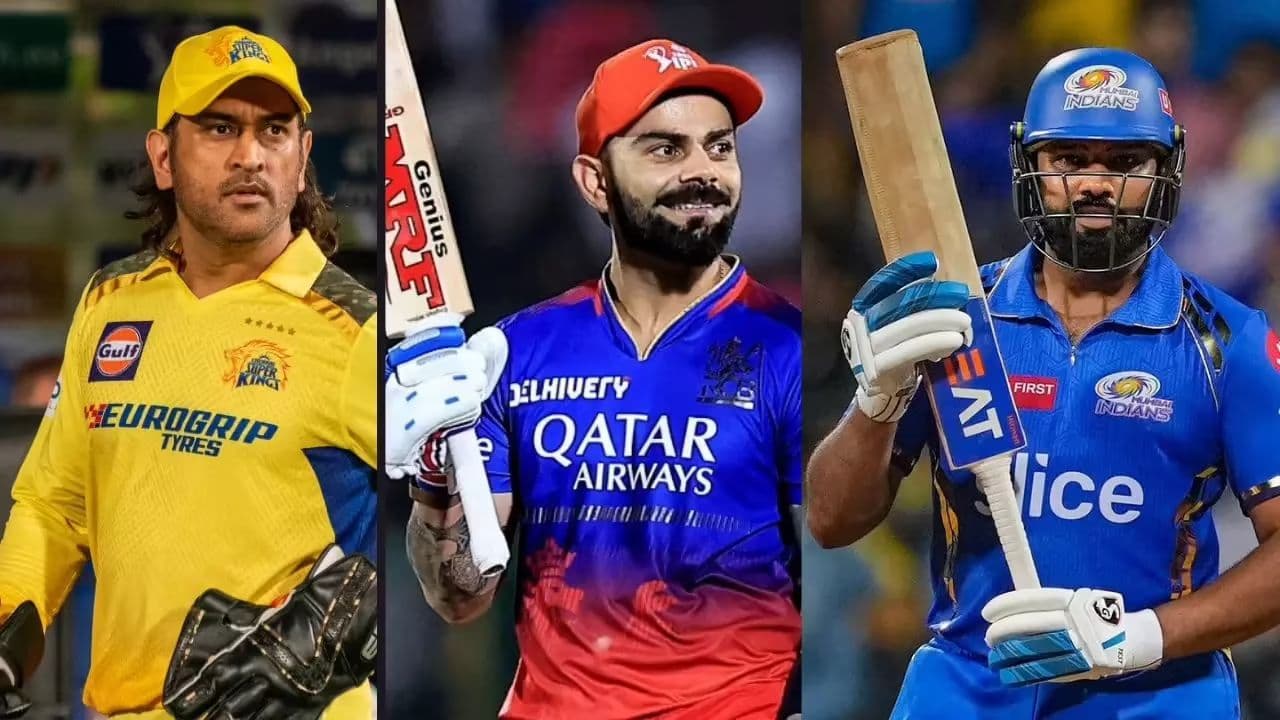Virat Kohli Retires from Test Cricket
Virat Kohli retires from Test cricket after 123 matches, 9,230 runs, and a legacy as India’s most passionate Test leader.
 Mahakal Book Admin
Mahakal Book AdminVirat Kohli retires from Test cricket after 123 matches, 9,230 runs, and a legacy as India’s most passionate Test leader. Explore his journey, impact, reasons for retirement, and what’s next for Indian cricket.
Virat Kohli’s Test Retirement: A Detailed Analysis
Indian cricket fans woke up to a seismic shift in the sport’s landscape on May 12, 2025, as Virat Kohli—the face of modern Indian cricket and one of the game’s greatest Test batters—announced his immediate retirement from Test cricket. Kohli’s decision, coming just weeks after Rohit Sharma’s Test exit and ahead of a crucial England series, marks the end of an era that redefined Indian cricket’s identity in the longest format.
In this in-depth blog, we’ll break down Kohli’s Test journey, analyze the timing and reasons behind his retirement, assess his legacy as a batter and captain, and explore what this means for the future of Team India.
The Announcement: Kohli’s Emotional Farewell
Kohli made his announcement via a heartfelt social media post, expressing gratitude for the journey that began in 2011 and transformed him into a global cricketing icon:
“It’s been 14 years since I first wore the baggy blue in Test cricket. Honestly, I never imagined the journey this format would take me on. It’s tested me, shaped me, and taught me lessons I’ll carry for life. There’s something deeply personal about playing in whites. The quiet grind, the long days, the small moments that no one sees but that stay with you forever. As I step away from this format, it’s not easy—but it feels right. I’ve given it everything I had, and it’s given me back so much more than I could’ve hoped for. I’ll always look back at my Test career with a smile… #269, signing off. 🇮🇳❤️”
The cricketing world responded with an outpouring of tributes, from teammates and legends to fans across the globe. Kohli’s retirement has not only closed a glorious chapter but also opened up conversations about the future of Indian Test cricket.
Kohli’s Test Journey: From Young Hopeful to Modern Great
Virat Kohli’s Test debut came against the West Indies in Kingston, 2011. Like many young batters, his initial outings were marked by inconsistency. Facing the likes of Fidel Edwards and Ravi Rampaul on lively Caribbean pitches, Kohli managed just 76 runs in his first three Tests. Critics questioned whether the ODI superstar could adapt to the demands of red-ball cricket.
Kohli’s breakthrough came during the 2011-12 tour of Australia. After a string of low scores, he notched his maiden Test century at Adelaide—a defiant 116 that showcased his technical adjustments and mental fortitude. This innings was a turning point, silencing doubters and establishing Kohli as a Test contender.
Over the next decade, Kohli’s numbers soared. He became the backbone of India’s batting across conditions, scoring centuries in Australia, England, South Africa, and New Zealand—something few Indian batters had achieved before him.
The Captaincy Era: Aggression and Transformation
In December 2014, Kohli took over as Test captain after MS Dhoni’s shock retirement. His leadership style was a stark contrast to his predecessor’s calm demeanor: Kohli was aggressive, expressive, and demanded intensity from his teammates. He championed fitness, pace bowling, and a fearless approach to winning overseas.
Under Kohli, India became the No. 1-ranked Test team for five consecutive years, won their first-ever Test series in Australia (2018-19), and reached the World Test Championship final in 2021.
Kohli’s Test Legacy: More Than Just Runs
- Championing Fitness and Fast Bowling: Kohli’s obsession with fitness changed the culture of Indian cricket. He set new standards for athleticism and empowered fast bowlers, building a pace attack capable of winning Tests abroad.
- Aggression and Self-Belief: Kohli’s on-field aggression instilled a sense of self-belief in the team, making India a more intimidating and competitive side, especially overseas.
- Redefining Overseas Success: Under Kohli’s leadership, India achieved unprecedented success abroad, including a historic series win in Australia.
- Raising the Bar for Test Cricket: Kohli’s passion for Test cricket inspired a new generation to value the format, ensuring its continued relevance in the T20 era.
Why Did Kohli Retire Now? Timing and Context
Kohli’s retirement comes at a pivotal moment for Indian cricket. Several factors influenced his decision:
- Generational Shift: With Rohit Sharma, Ajinkya Rahane, Cheteshwar Pujara, and R Ashwin all having exited or been phased out of the Test team in recent months, Kohli’s departure clears the way for a new core. Young batters like Yashasvi Jaiswal, Shubman Gill, Sarfaraz Khan, and Shreyas Iyer are now expected to take on leadership roles.
- Recent Form and Motivation: While Kohli remained a pillar of India’s batting, his Test centuries became less frequent in recent years. Since January 2020, he scored only three centuries in 39 Tests, averaging 30.72 in that period. By stepping aside now, Kohli avoids the fate of being dropped and allows the team to plan for the future without uncertainty.
- Providing Clarity to Selectors: By retiring before the England series, Kohli gives selectors ample time to build a new core and leadership group. This clarity is crucial with the next World Test Championship cycle and a busy calendar ahead.
- Focus on ODIs and Personal Goals: Kohli, who had already retired from T20Is after India’s 2024 World Cup win, is expected to continue playing ODIs. With the 2027 ODI World Cup in South Africa on the horizon, Kohli may want to focus his energies on white-ball cricket and prolong his career in the shorter formats.
Kohli’s Greatest Test Innings: Defining Moments
- Adelaide, 2014 (115 & 141): In his first Test as captain, Kohli scored twin centuries on a turning track, nearly pulling off a record chase against Australia. His 141 in the fourth innings remains one of the greatest displays of attacking batting under pressure.
- Perth, 2018 (123): On a lively pitch against a world-class Australian attack, Kohli’s 123 was a masterclass in technique and temperament, even as wickets tumbled around him.
- Johannesburg, 2018 (153): On a treacherous pitch, Kohli’s 153 was the backbone of India’s resistance, showcasing his ability to adapt and fight in the toughest conditions.
- North Sound, 2016 (200): Kohli’s first double-century came in the West Indies, setting off a run of big scores that redefined his approach to Test batting.
The Road Ahead: What Does Kohli’s Retirement Mean for Team India?
- Leadership Transition: With Kohli and Rohit gone, the selectors must identify a new Test captain. Shubman Gill is the frontrunner, with KL Rahul, Jasprit Bumrah, and Rishabh Pant also in the mix. The new leader will have the task of guiding a young team through a period of transition.
- Batting Core Rebuild: India’s top order will now revolve around emerging talents. The likes of Jaiswal, Gill, Iyer, and Khan have the opportunity to establish themselves as the new backbone of Indian Test batting.
- Maintaining the Winning Culture: Kohli’s legacy is not just in runs and wins, but in the culture of excellence and aggression he fostered. The challenge for the next generation is to uphold these standards and continue India’s dominance at home and competitiveness abroad.
- Kohli’s Continued Influence: Even in retirement, Kohli’s presence will loom large. His fitness, work ethic, and approach to the game have set benchmarks for future generations. As a senior statesman in ODIs and a mentor to younger players, Kohli’s influence on Indian cricket is far from over.




